The Ultimate Healthy Salad
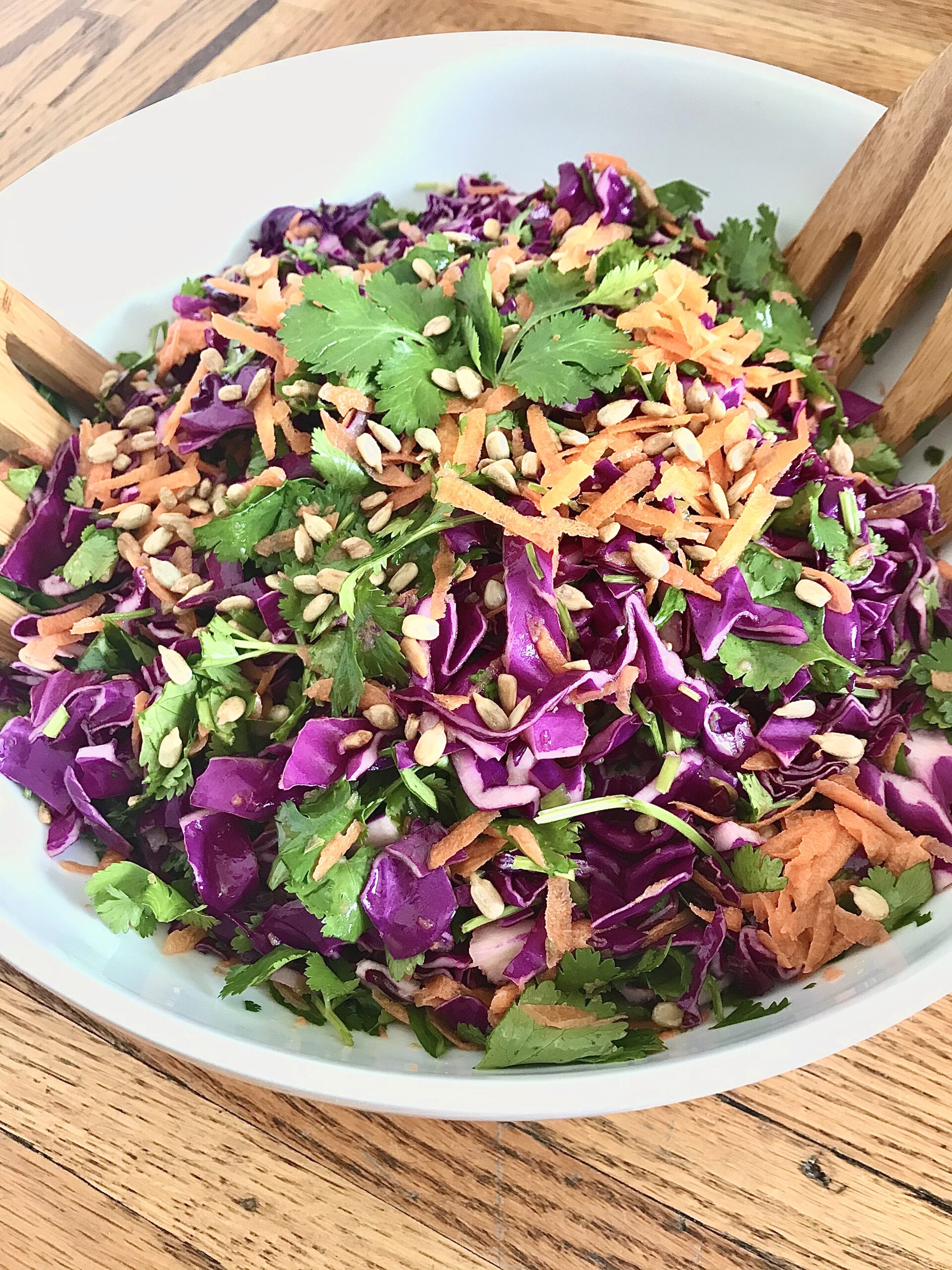
I have so many clients come to me stating:
“I’m still hungry after eating a salad.”
“Salads are boring and not satisfying.”
When you’re just eating lettuce and chicken, it can be redundant and it won’t keep you full for long.
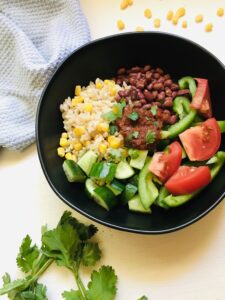
We eat a lot of salads for our main meals. I love a good salad so I make sure it is hearty, wholesome, and packed with all the necessary goodies to keep us satiated, nourished, and content.
Here is my guide to The Ultimate Healthy Salad.
You will definitely be a fan of this meal!
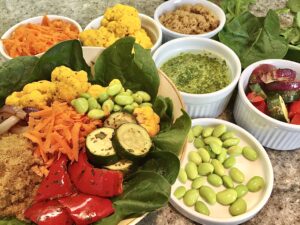
When considering what is in The Ultimate Healthy Salad, you want balance with all the macronutrients.
- Carbohydrates: Carbs are important because they provide energy and help control hunger levels.
- Protein: Protein is essential for optimizing one’s metabolism and assisting with the uptake of the carbohydrates. In addition, protein helps maintain our lean muscle mass, which also helps us burn more energy.
- Fat: Fat provides satisfaction and helps our bodies process fat-soluble vitamins. Making sure there is the right amount of fat is key. Best not to overdo it on the fat because that can contribute to an unnecessary abundance of calories which can defeat the purpose of eating a “healthy” salad.
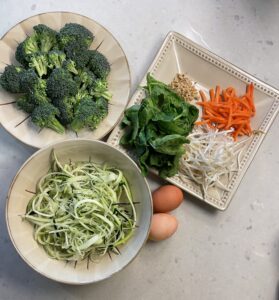
The Ultimate Healthy Salad includes:
- As many vegetables as you want such as lettuce, spinach, kale, tomato, bell peppers, cucumber, carrots, green beans, watercress, mushrooms, asparagus, zucchini, celery (to name a few).
- I love using my salad spinner to easily wash and dry greens.
- Protein source such as chicken, salmon, tuna, shrimp, crab, tofu, edamame, legumes (garbanzo beans, lentils, kidney beans, black beans), quinoa, cheese, nuts, and seeds.
- Grain & Starch source such as starchy-vegetables which have a higher source of fiber-packed carbs like corn, potatoes, legumes (which also have protein), or peas (which also have protein). Quinoa (which also has protein).
- Heart-healthy fats from olive oil, avocado, nuts, and seeds. Be mindful of how much fat you put into your salad because the fat sources can add up quickly.
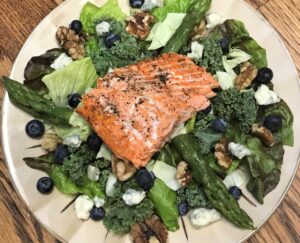
Portion Sizes for The Ultimate Healthy Salad:
Portions do matter so consider the following when making a salad.
- Keep the animal proteins to about 4-6 ounces (depending on the person).
- Using beans/legumes as both the protein source and the grain/starch source is a great combo. Keep it to about ½ – 1 cup serving size.
- General rule of thumb for grains & starches in a salad is to keep it to ½ – 1 cup serving. You can always combine sources such as enjoying ¼ cup corn + ¼ cup black beans.
- Watch the fats! Fats are fantastic, but they do add up quickly.
- Be mindful of how much dressing/oil used in the salad. Ideally, there is 1 – 2 Tablespoons per person.
- Also take note of the nuts, seeds, avocado, and cheese (which contains a higher amount of fat). Find the balance.
- If wanting avocado and nuts, consider using ¼ avocado + 1 Tablespoon or 6 nuts.
- Here are some recipes for delicious, quick salad dressings:
- Balsamic Vinaigrette
- Dijon Mustard Dressing
- Taco Salad Dressing
- Carrot-Ginger Dressing
- And they’re easy to make using a hand held blender or a whisk.
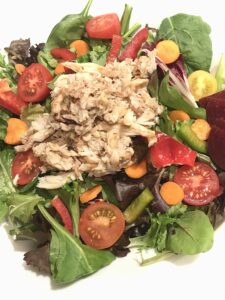
Mouthwatering recipes for The Ultimate Healthy Salad:
Oregon Summer Salad with Grilled Salmon
Crab Salad with Healthy Homemade Thousand Island Dressing
Barley Salad with Turkey Meatballs
Star Spangled Quinoa Salad
Tahini-Lemon Kale Salad with Apples
Spinach Spring Salad with Herbs de Provence Dressing
Avocado, Mango, and Cucumber Salad with Cilantro-Lime Dressing
Gluten-Free Walnut Pesto Quinoa Salad
By Sarah Koszyk, MA, RDN
**There are affiliate links in this post and I will be compensated if you buy the products using these links BUT there is no extra charge to you!
Recent Posts
2 Comments
Leave A Comment Cancel reply
Get 10 Must-Have Protein-Rich Powerhouse Snacks
These will fuel and satiate you.
You’ll also get access to my newsletter for the latest recipes, health tips, and exclusive offerings.

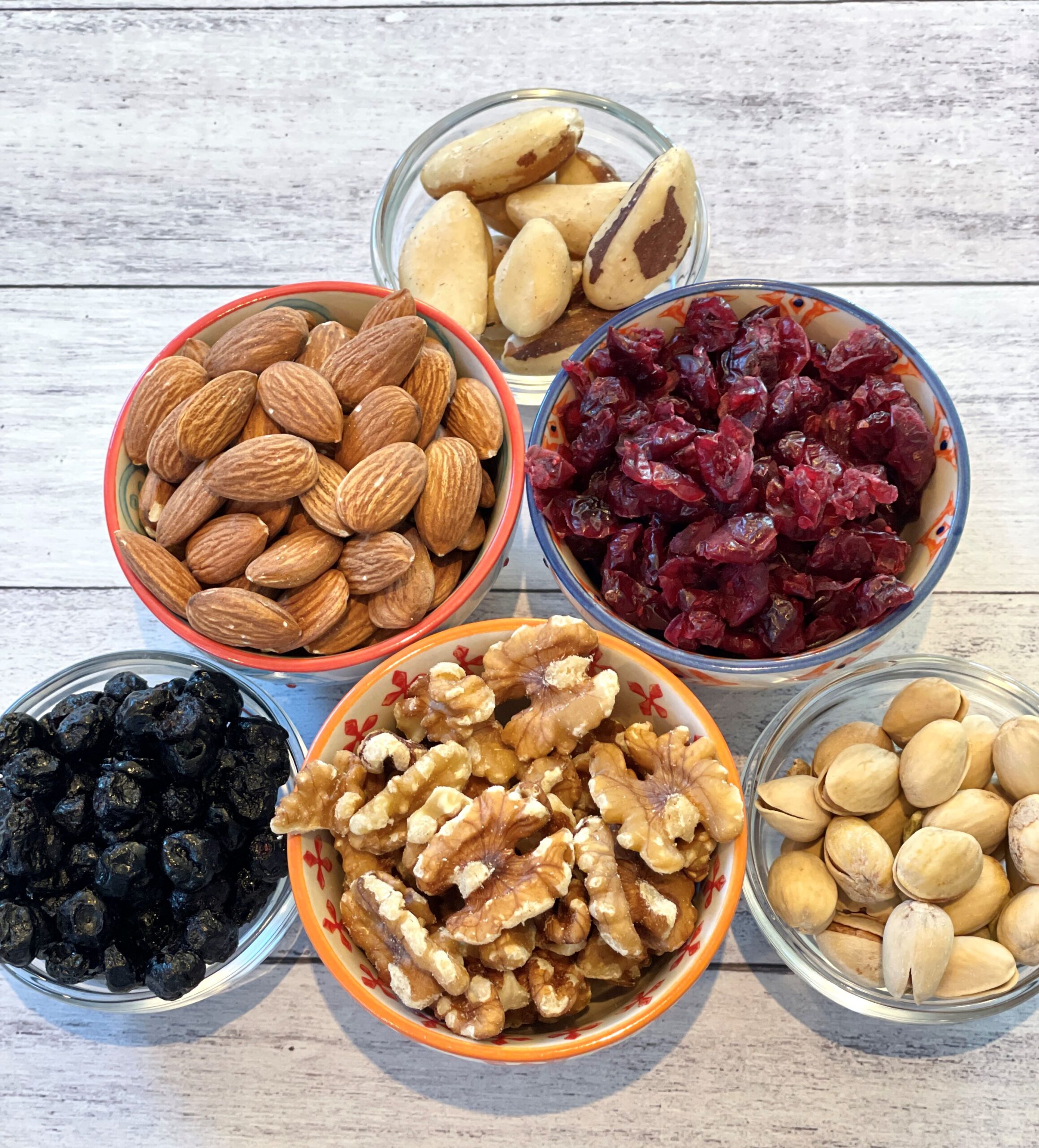
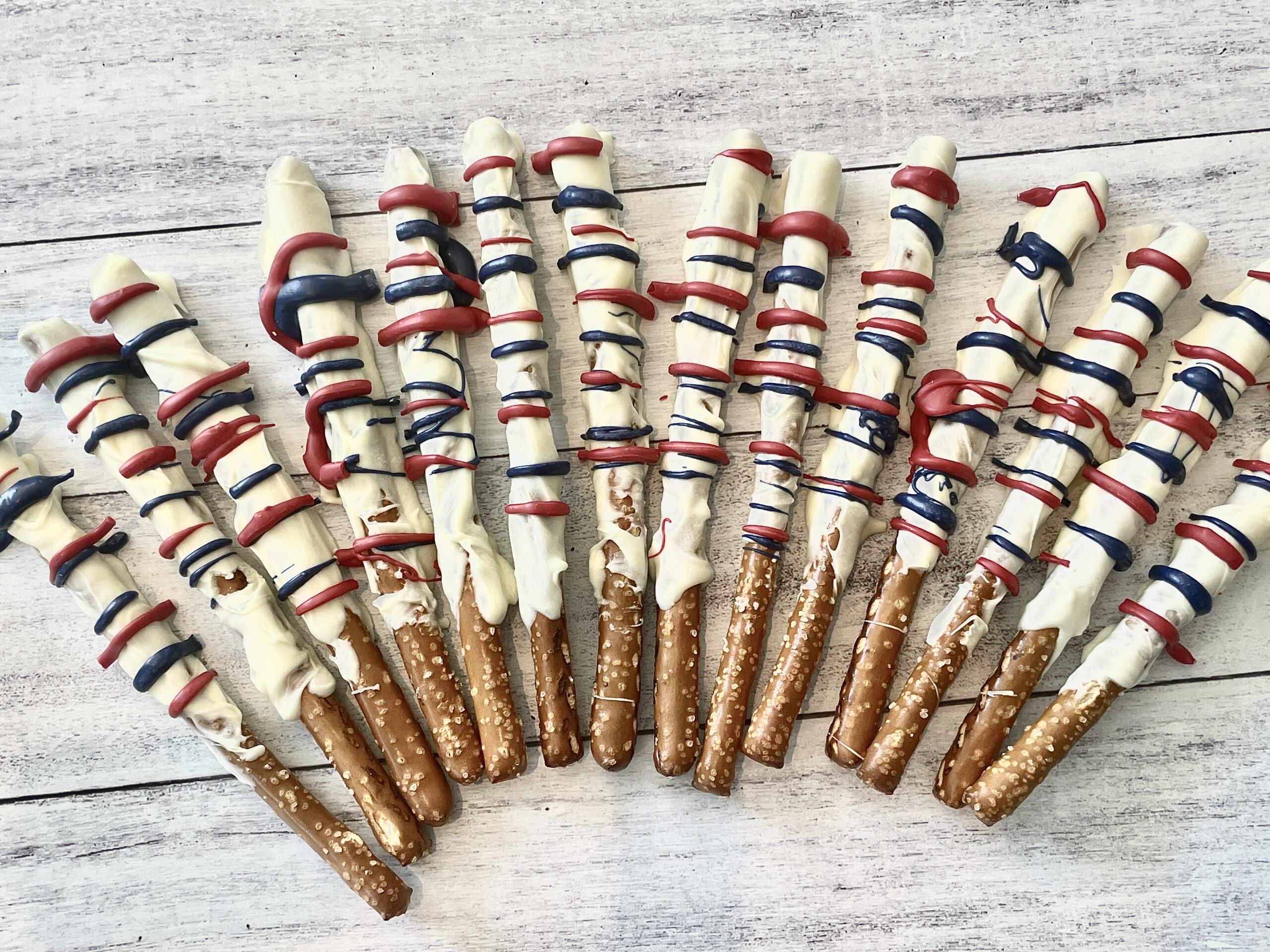
Thank you Sarah for these salad ideas. I love the varieties in my salads.
Yes! It’s so good to have a few options. You’ll never get bored! ❤️